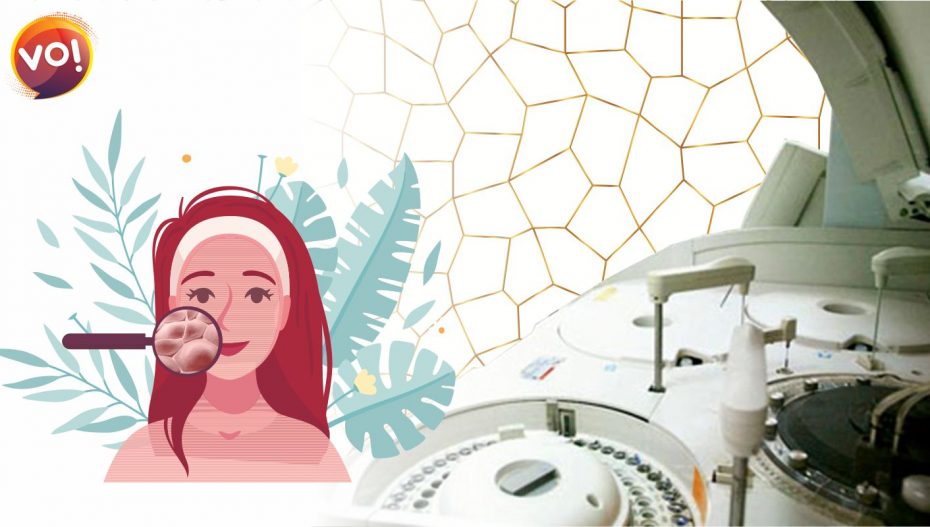The lockdown of May 2020 was particularly arduous for Jamalpur resident Faisal Kharawala. At the peak of strict curfew guidelines across India, particularly in Maharashtra and Gujarat, the 31-year-old drove 1,147 km from Ahmedabad to Belgaum in Karnataka with two of his relatives to get cadaver skin for his wife, who had suffered over 71 per cent deep burns at home while cooking.
“My entire team was on standby aiding Faisal in transporting the cadaver skin from Belgaum to SVP Hospital in Ahmedabad. The skin requires certain temperature control, and if the box in which it is stored is opened for any reason midway, the entire effort goes waste. We were worried as there was strict checking and the patient’s husband had to cross three state borders. Had even one check-point opened the box, the skin would have gone waste,” Dr Vijay Bhatia, a renowned plastic surgeon with 30 years of practice and a consultant at Ahmedabad’s Sterling Hospital told Vibes of India (VoI).
Luckily for Faisal, the team that Dr Bhatia had put in place ensured that there were no glitches in the transportation. “The surgery went on for 36 hours. By god’s grace and doctor’s efforts, my wife, Misba (26), came out better and stronger,” gushes Faisal.
Dr Bhatia said though Gujarat is heading towards greater organ donation, it lacks in skin donation, primarily because there was no skin bank in the state until three months back.
On an average, Dr Bhatia treats 365 burn cases a year. “We don’t have enough infrastructure in Gujarat to establish skin banks. Awareness also plays an important part in ensuring that people donate. We are lacking on that part as well. I usually get the skin from Mumbai as they have a better facility and system,” Dr Bhatia said.
While setting up a skin bank is not expensive, it requires quality infrastructure for storage purposes. “The skin taken from a dead person’s body is treated with chemicals first so as to increase its shelf life, following which it has to be stored under -71 to -83 degrees Celsius temperature. Mumbai has the infrastructure whereas Gujarat, despite getting so many patients, is yet to get its act straight,” Dr Bhatia said.
One Donation In Newly Set Up Rajkot’s Skin Bank
Three months back, Gujarat got its first certified skin bank in Rajkot due to the efforts of the Indian Red Cross Society. “In three months, it has received only one cadaver skin donation”, Dr Deepak Narola, Chairperson of Indian Red Cross Society, said. The authorities have also earmarked space for setting up a skin bank unit at Rajkot Medical College, but no other move has been made.
During the Vibrant Gujarat event in 2011, the Gujarat government had signed an MoU with the Euro Skin Bank, one of the largest skin banks of the Netherlands, for setting up a skin bank at Ahmedabad Civil Hospital Campus. And 11 years later, the MoU is yet to materialise.
Dr MF Shaikh, the then head of burns and plastic surgery department at Civil Hospital, said since there was a lot of construction work happening at the Civil Hospital in 2011, the exact spot for setting up of a skin bank could not be finalised. “The G-2 ward of the hospital where the skin bank was supposed to be set up was demolished,” Dr Shaikh said. Asked if bureaucratic red-tape became a stumbling block, Dr Shaikh answered in the negative.
Scenario Across India
India has only two government-backed skin banks – one in Sion Hospital in Mumbai and the other at Bangalore Medical Hospital. The other skin banks are being run by the Rotary and only in a couple of other states. Maharashtra has a skin bank each in Pune at Surya Hospital, in Nashik at Vedant Hospital, in Mumbai at Sion Hospital and Masina Hospital, in Nagpur at Government Medical College, and in Sangli at Sushruta Hospital. In Karnataka, there are skin banks at KLES Hospital in Belgaum, Bangalore Medical College and Kasturba Hospital in Manipal. Tamil Nadu has four skin banks, whereas Madhya Pradesh and Orissa have one each.
The only dedicated skin bank and burns hospital in the country is National Burns Centre, Airoli in Navi Mumbai, headed by Dr Sunil Keswani.
Demand And Supply Mismatch
For a population of over 1.38 billion, 17 skin banks just don’t cut it. According to official data compiled from these skin banks, the total donation received from January 2010 to August 2020 was a paltry 1,671.
“India witnesses an average around 17 lakh accidents in a year and most patients require skin grafting. Given the lack of donations, the morbidity rate increases and so does the recovery time,” Dr Narola pointed out.
Dr Bhatia said besides accidents, skin grafting is also required in patients of dowry burns, riot victims, acid attack victims, and more importantly, victims of industrial burns. “Maximum cases are of industrial burns and they are usually a third degree in nature and require homograft — using a donor’s skin, along with autograft which uses one’s own skin for surgical reconstruction,” he said.
Dr Sunil Keswani, plastic surgeon and head of National Burns Centre, Airoli initiated the Skin Bank at the Centre in collaboration with the Euro Tissue Bank in Beverwijk, the Netherlands, in 2009.
“Although skin preservation has been in existence in Europe for 35 years, here it is a rather recent programme. Similar to eye donation, a pledge form needs to be signed, but after the death of the person, consent from the next of kin is required,” said Dr Keswani.
“In Mumbai, on an average, we receive 20 donations a month. Our calculation, however, reveals that we require 150 donations to somewhat match the demand,” Dr Keswani said, adding, “The government has done extremely minimal to ensure the functioning of skin banks in India. All the major banks are being run by Rotary”. —












